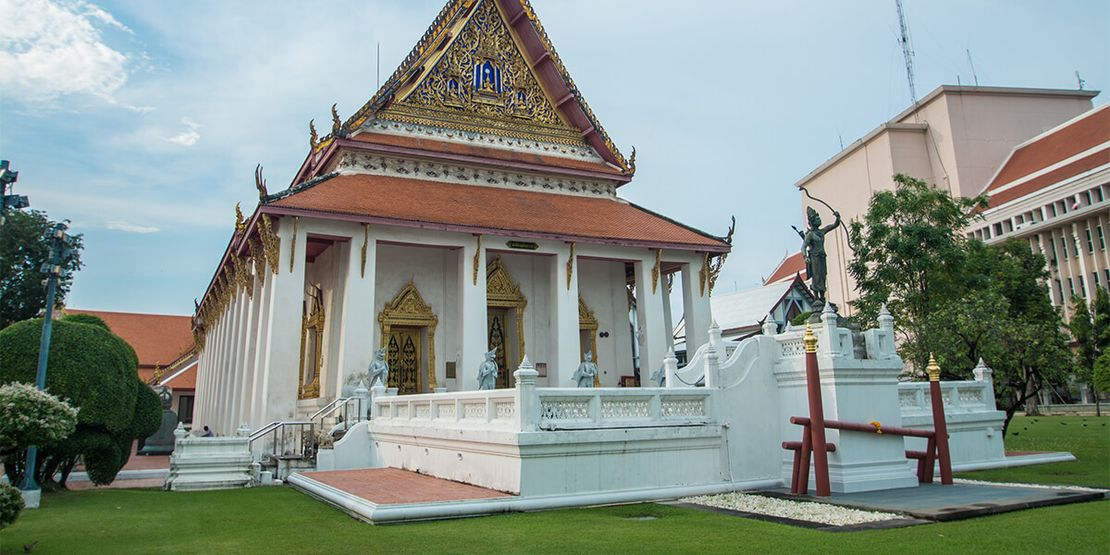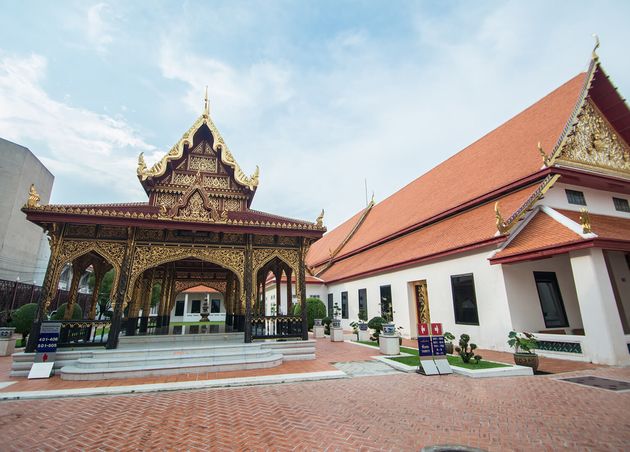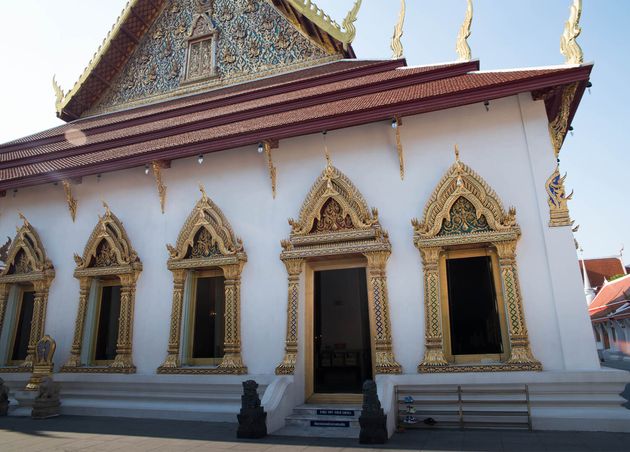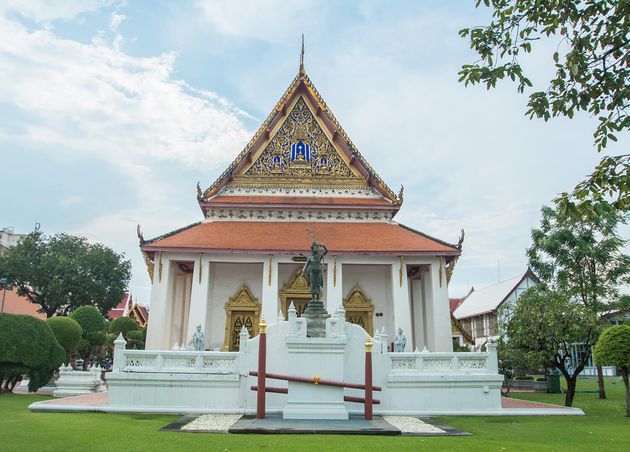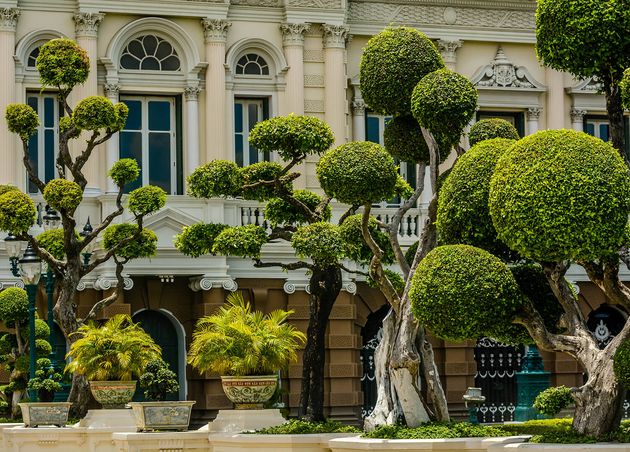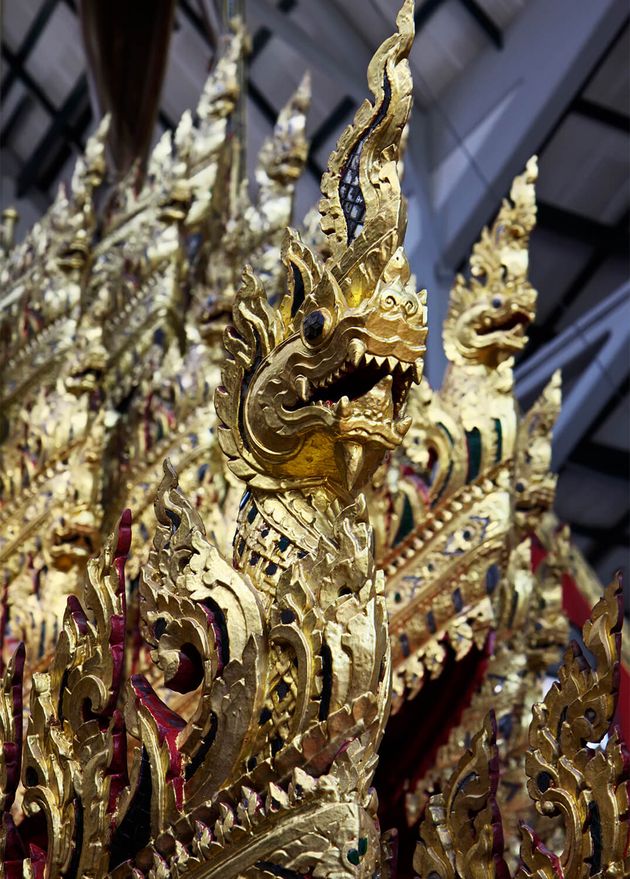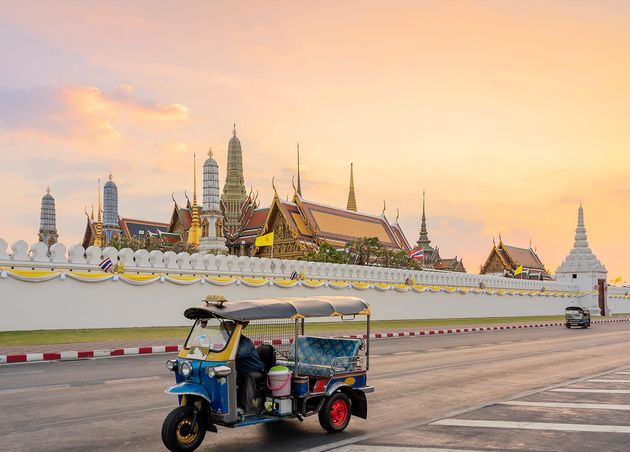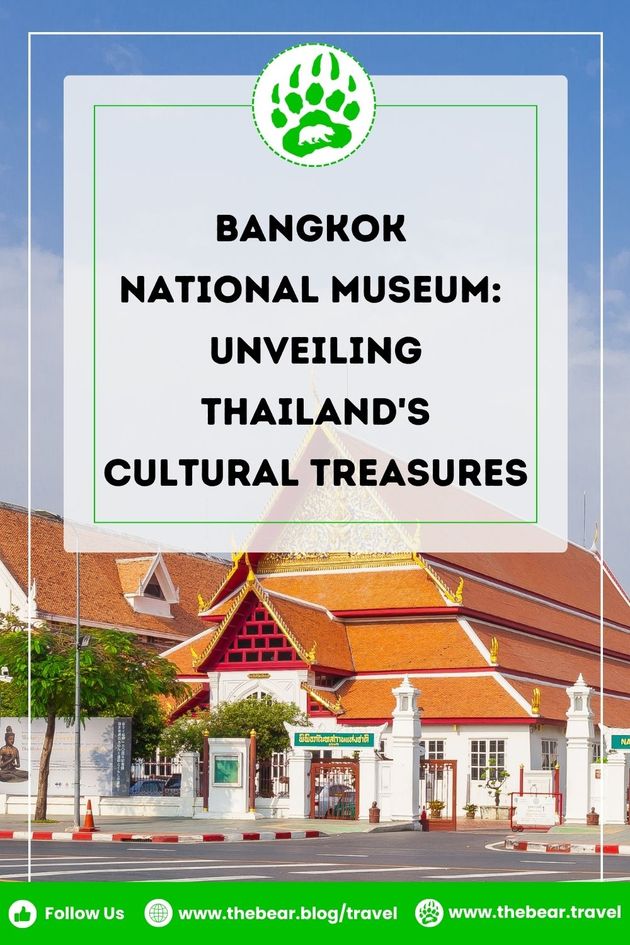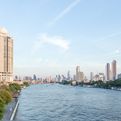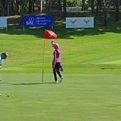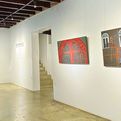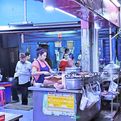Bangkok National Museum: Unveiling Thailand's Cultural Treasures
The Bangkok National Museum, located within an old royal palace, is one of Southeast Asia's most extensive collections of art, history, and memorabilia. The collection primarily consists of Thai artifacts and includes items from various regions in Asia that were once part of King Rama IV's impressive collection.
Visiting the Bangkok National Museum before exploring historical sites such as Sukhothai and Ayutthaya will provide valuable insights, enhancing your understanding of these cultural landmarks. This museum is an excellent starting point for gaining a deeper appreciation of Thailand's history and artistic heritage.
The Bangkok National Museum houses the country's most extensive collection of local art and artifacts. It's somehow conveniently located within walking distance of Wat Phra Kaew and The Grand Palace, making it easy to incorporate these historic sites into your day trip in Krung Thep Maha Nakhon (Bangkok).
If you're a history enthusiast looking to explore this remarkable art haven, come with us on a tour of the Bangkok National Museum in Thailand.
Bangkok National Museum has a funeral chariot hall, built-in carriages obtained for royal incinerations, and countless great representations of Thai architecture. It offers open English, German, French, and Japanese tours on various days of the week.
The History of the Bangkok National Museum
King Rama V, the visionary behind the museum complex, laid the foundation for this cultural treasure—the initial structures in the area date back to 1782, aligning with the heart of Krung Thep Maha Nakhon (Bangkok). The constructions within the vicinity showcase a charming Thai architectural style. They house invaluable historical artifacts and objects of cultural significance, including jewelry, everyday items, weaponry, tools, and musical instruments. Thanks to this heritage, visitors can trace the artistic evolution of the Thai people from the Bronze Age to the late 18th century.
1795, the magnificent Prince Buddha Sawan Hall was erected on the museum grounds. This splendid and resplendent structure houses an ancient Buddha sculpture within its walls. The walls themselves are adorned with exquisite depictions, narrating the life of the revered spiritual teacher.
Highlighting the Treasures of the Bangkok National Museum
Thailand's premier public museum is the National Museum of Bangkok, the largest in Southeast Asia. Its extensive collection encompasses Thai archaeology, ethnology, lifestyle, history, and art. Its origins trace back to 1874 when King Rama V opened his father, Rama IV's, private collection to the public. In addition to showcasing the nation's treasures, including weaponry, clothing, musical instruments, royal carriages, and decorative objects, the museum houses a remarkable collection of Buddhist art from various regions of Asia.
The National Museum features three ongoing exhibitions: the Thai History Gallery, the Decorative Arts and Ethnological Collection, and the Archaeological and Art History Collection. The museum's premises include the palace complex originally constructed for viceroy Wang Na in the late 18th century, with many of its structures considered works of art.
At the heart of the museum stands the Buddha Sawan Temple, built in 1787 to enshrine the Phra Buddha Sihing image. It features splendid murals depicting stages from the life of the Buddha. The Red House, once the residence of Rama I's sister, Sri Suriyen, is an elegantly restored teak structure showcasing the royal lifestyle of its era.
To better maintain and assist the widespread exhibition, the Museum became governed by the Ministry of Culture's Fine Arts Department in 1934.
Exploring the Museum's Nearby Attractions
A wealth of captivating attractions surrounds the Bangkok National Museum. Just a few blocks south lies the renowned Wat Mahathat, an important temple. This Vipassana meditation center is also known for hosting the city's largest amulet market, where Sundays become a bustling event as people buy, sell, and trade magically imbued amulets.
Slightly further south, you'll discover the Grand Palace and Wat Phra Kaew, two of Thailand's most vibrant tourist attractions. The Bangkok City Pillar (San Lak Muang) separates the National Museum from the Grand Palace. Every major city and metropolis in Thailand features an official pillar turned into a shrine. Bangkok, for apparent reasons, holds this tradition sacred.
Dining options are scattered near the Bangkok National Museum, ensuring you can savor culinary delights from one of the many conveniently located street food carts.
Why Visit the Bangkok National Museum in Thailand?
At the Bangkok National Museum, you'll have the opportunity to explore the different stages of Thailand's history and view the country's most significant archaeological and art collections. This museum lets you get close to precious Thai artifacts and art pieces, including ancient statues, royal monuments, and Buddha sculptures from various eras of Thai history, all housed within traditional Thai architecture.
The museum features three permanent galleries:
-
Thai History Gallery: Located in Siwamokhaphiman Hall, this gallery houses the Ram Khamhaeng Inscription, a stone monument from 1292 considered one of the earliest examples of Thai writing. The inscriptions provide insights into life in the ancient Sukhothai Kingdom.
-
Archaeological and Art History Gallery: In Siwamokhaphiman Hall, you'll find the Prehistory and Art History Gallery, which showcases centuries of Thai statues and artifacts, some dating back to the 6th century.
-
Decorative Arts and Ethnological Collection: This gallery is a treasure trove for visitors, featuring valuable objects like stones, weapons, ancestral instruments, old masks, and artifacts from around the world. Some items were gifts from international leaders to Thai kings.
One notable exhibit is the Phra Singh sculpture, which has a long and intricate history. It's believed to have originated in Sri Lanka in the second century, but its exact age and origin remain unclear. Thailand houses several Phra Singh sculptures, each vying for the title of the original, including the one at the Bangkok National Museum.
In addition to these galleries, you'll find the Buddha Sawan Chapel, which houses Phra Phuttha Sihing, a revered Buddha statue considered second in importance only to the Emerald Buddha at Wat Phra Kaew. The chapel features beautiful murals depicting the life of Buddha, with English explanations provided.
The "Red House" is a visually striking teak building once the Queen's residence. Inside, you can gain insights into the royal lifestyle of that era. The museum also displays splendid, boat-shaped funerary vessels.
The museum's various halls take you through Thai history, from the early prosperous civilizations of Sukhothai and Ayutthaya to the Rattanakosin era and the modern Thai Kingdom. You can go and easily spend a whole day exploring the diverse art, musical instruments, costumes, and monuments. If you have limited time, grab a map from the entrance and choose galleries that align with your interests, covering different historical periods and various Asian regions.
How to Visit the Bangkok National Museum in Thailand?
Used for royal ceremonies, the Bangkok National Museum, which is a 30-acre area, is located on the northwest corner of Sanam Luang. If you're coming from Khao San Road, it's about a 10-minute walk south, less than a kilometer, but you might need to navigate some busy streets.
If you're in other parts of Krung Thep Maha Nakhon (Bangkok), taking a river taxi boat is a scenic and viable way to reach the museum. Disembark at the Maharaj pier, walk east until you reach Sanam Luang, and turn left to cross the grassy field. The Bangkok National Museum is approximately a short 15-minute walk to the north.
Unfortunately, accessing the Bangkok National Museum via the BTS Skytrain or MRT isn't the most convenient option. You could take the BTS to the Saphan Taksin station, transfer to a river taxi, and head north along the Chao Phraya River. Alternatively, taking a taxi might be more straightforward, but ensure the driver uses the meter!
You'll have to walk outside between the scattered pavilions and buildings. So, don't forget to bring an umbrella if touring during Thailand's rainy season.
Maps & More Information
The Bangkok National Museum shows Thailand's enormous local art and artifacts collection. Established by King Rama V, the Museum invades the old 18th-century Wang Na Palace in Phra Nakhon. It's within walking distance of Wat Phra Kaew and The Grand Palace, so you can effortlessly assemble a day trip to these spots while in Krung Thep Maha Nakhon (Bangkok).
|
Entrance Fees |
200 THB |
|
Business Address |
QF5R+6MP, Soi Na Phra That, Phra Borom Maha Ratchawang, Phra Nakhon, Bangkok 10200 |
|
Business Hours |
08:30 - 16:00 | Wednesday to Sunday |
|
Phone Number |
+66 (0) 22-241-370 | +66 (0) 22-241-333 |
|
Email Address |
|
|
Website |
|
|
GPS |
13.7580779, 100.4917077 |
The Bear Team
We, The Bear Team, are a united group of digital experts and adventurers. Combining technical skills with creative flair, we deliver informative, valuable, up-to-date content. Whether seeking travel inspiration or innovative solutions, we're your go-to for fun, authentic, impactful, and timeless experiences.
The Bear Travel | Experience like a Local
A fast-growing Thailand Travel Blog written by Expats and Thais since 2017. We will share our experiences and ideas from an insider point of view for you to create your own unique Thailand experience.
For the latest news and events about The Bear Travel, follow us on Facebook, Instagram, Twitter, Pinterest, or YouTube.
For any issues, concerns, or queries, don’t hesitate to CONTACT us.
Recommended for you
Top 10 Best and Most Popular Phuket Nightlife Venues
Rowan (Guinness Bear)
In Search of Art Tour: Enjoy the Creative Side of Bangkok
Sky, The Bear Traveler


